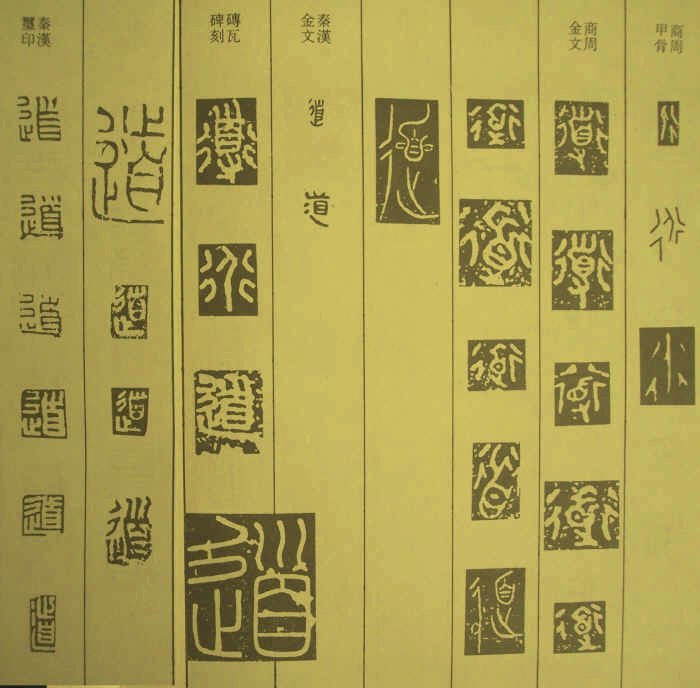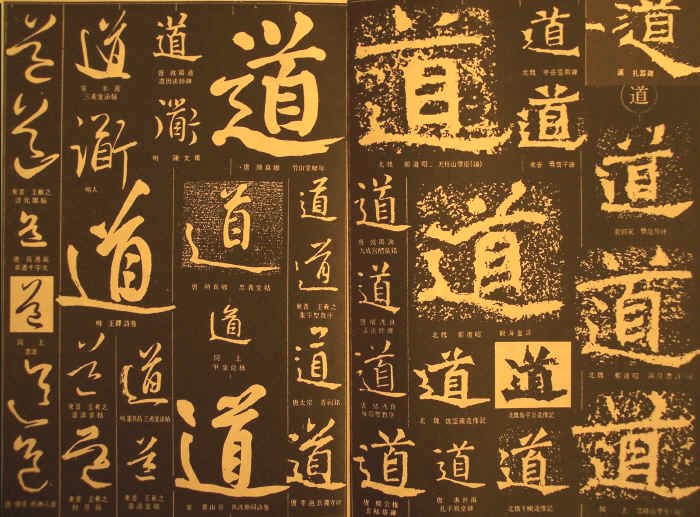
The
'concept' of the One is not a concept at all, yet it is nevertheless the
foundation and grandest expression of many topics in philosophy. Some
philosophers point out that no words can do justice to the power of the One;
even the name, 'the One,' is inadequate, for naming already implies discursive
knowledge, and since discursive knowledge divides or separates its objects in
order to make them intelligible, the One cannot be known through the process of
discursive reasoning.
Chinese
characters are made up of strokes. The simplest stroke is a dot “Dian 點
”
or a horizontal stroke “Yi 一
”
which means “one.” As the number of strokes increased in each character, the
possibilities began to expand and numerous characters were invented. It’s said
the largest and most comprehensive Chinese dictionaries would contain about one
or half million of Chinese characters while the ordinary dictionaries would
contain 20,000 to 100,000 characters or so. (Some people estimate that the daily
conversation and writing in Chinese only involve about 5,000 Chinese characters,
with about 20,000 terms made up of combinations of those 5,000 characters.) And each character in each dynasty,
style, or by different calligraphers would have so many derivatives of writing.
It’s like that there are hundreds of dialects in China or there are innumerous
ways to say a word by different people. The possibilities are endless;
nevertheless, they all start from the Oneness.

Various ways to write “Tao (the Great Way)” in Zuan Style

Various
ways to write “Tao (the Great Way)” in different styles
An interesting video "Women in Art"
Knowledge
of the One is achieved through the experience of its 'power' and its nature,
which is to provide a 'foundation' and location for all existents.
In Chinese calligraphy, as characters and styles were invented, the way
each individual stroke is positioned, rendered, and perceived became
distinctive. There are five major styles in
Chinese scripts – Zuan, Li, Tsao, Hsin, and Kai. Among each major style and calligraphers, the
derivatives and varieties are endless. It’s not feasible to start a
statistical research and numbering. As the styles developed, the number of
theories and methods also drastically increased. However, if one can grasp the
very one and basic Theory of Center Tip
( 中鋒理論
),
all styles and methods will be self-explaining and contained within. The rest
are just variations or the innumerous styles are just “illusions” – there
is only One existing in the artist’s mind. The Chinese saying, “10,000
methods all come into one method ( 萬法歸一
) ” can be applied
in many fields besides arts.
The
“power” of the One is not a power in the sense of physical or even mental
action; the power of the One, is to be understood as the only adequate
description of the “manifestation” of a supreme principle that, by its very
nature, transcends all predication and discursive understanding. This
“power,” then, is capable of being experienced or known only through
contemplation or the purely intellectual “vision” of the source of all
things.
“One” can be split into two different directions thus creating a “duality” effect. We usually separate the world into polarities: poor and wealthy, dark and light, female and male, self and other, beautiful and ugly, matter and spirit. Narrowly speaking, if a person renders a Chinese character stroke, the outcomes will be simply beautiful or ugly. In a broader sense, if many people render a stroke, the outcomes will be beautiful, ugly, and numerous possible so-so results falling in between the duality of “good” or “bad.” “Duality” is not an absolute concept. It has exceptions. It is based on how we define or judge. Thus determination, enthusiasm, patience, observation, and mental design are all decisive factors for our progress in practicing Chinese calligraphy. The more nuances we look into and apply, the higher level we will achieve and the more enjoyment we will experience.
|
|